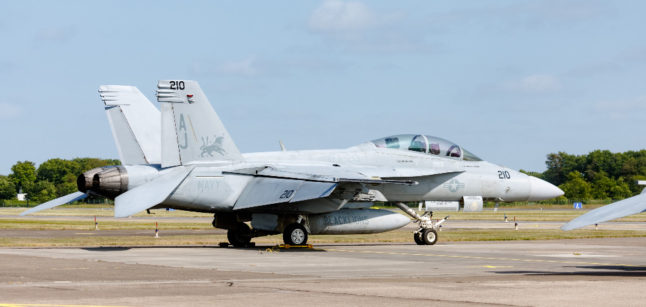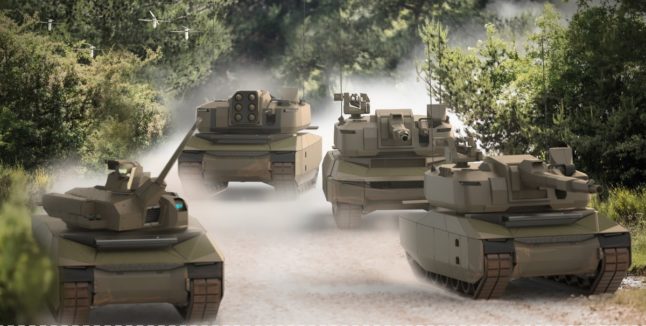The German-led “Air Defender 23” will take place over around 10 days starting Monday and include some 220 military aircraft from 25 NATO and partner countries.
Presenting the plans, US Ambassador to Germany Amy Gutmann said that while the exercise was purely defensive in nature, it was intended to send a message to countries including Russia.
“I would be pretty surprised if any world leader was not taking note of what this shows in terms of the spirit of this alliance, which means the strength of this alliance, and that includes Mr Putin,” she told reporters,
referring to the Russian president.
“By synchronising together, we multiply our force.”
What’s involved in the exercise?
The exercise will include operational and tactical-level training, primarily in Germany, but also in the Czech Republic, Estonia and Latvia.
General Ingo Gerhartz of the German Luftwaffe said “Air Defender” was conceived in 2018 in part as a response to the Russian annexation of Crimea from Ukraine, although he stressed it was “not targeted at anyone”.
“We are a defensive alliance and that is how this exercise is planned,” he said.
General Michael Loh, director of the US Air National Guard, said NATO’s duties were at an “inflection point”.
“A great deal has changed on the strategic landscape throughout the world, especially here in Europe,” he said.
“This exercise focuses on supplementing the permanent United States presence in Europe” as well as providing training “on a larger scale than what was usually accomplished on the continent”, Loh added.
Gutmann said that while there were no plans to make “Air Defender” a recurring exercise, she added: “We have no desire for this to be the last.”
Will there be disruption to civilian flights?
Asked about potential disruption to civilian air transport during the exercise, Gerhartz insisted the planners had done “everything in our power” to prevent flight delays or cancellations as school holidays begin in some German regions.
READ ALSO: Could a NATO air defence drill spell chaos for travellers in Germany this summer?
Although NATO itself wants to keep the restrictions in the airspace over Germany “as low as possible”, Germany’s air force has already announced that there will be no civilian air traffic in northern, southern and eastern Germany for several hours in June.
Airlines will then have to fly around these areas.
According to current plans, the following areas will be used for exercises between June 12th and 23rd.
- the eastern training area, including parts of the Baltic Sea and the coastal region of Mecklenburg-Western Pomerania, between 11 am and 1 pm
- the southern training area – a corridor from the Bavarian Lechfeld to the Baumholder training area (Rhineland-Palatinate) – between 2 pm and 4 pm, and
- the northern exercise area – mostly located over the North Sea – will be reserved for military use between 5pm and 17pm
No exercise flights will take place on the weekends. The flight routes are largely identical to the flight corridors already permanently used by the air force.



 Please whitelist us to continue reading.
Please whitelist us to continue reading.
Member comments